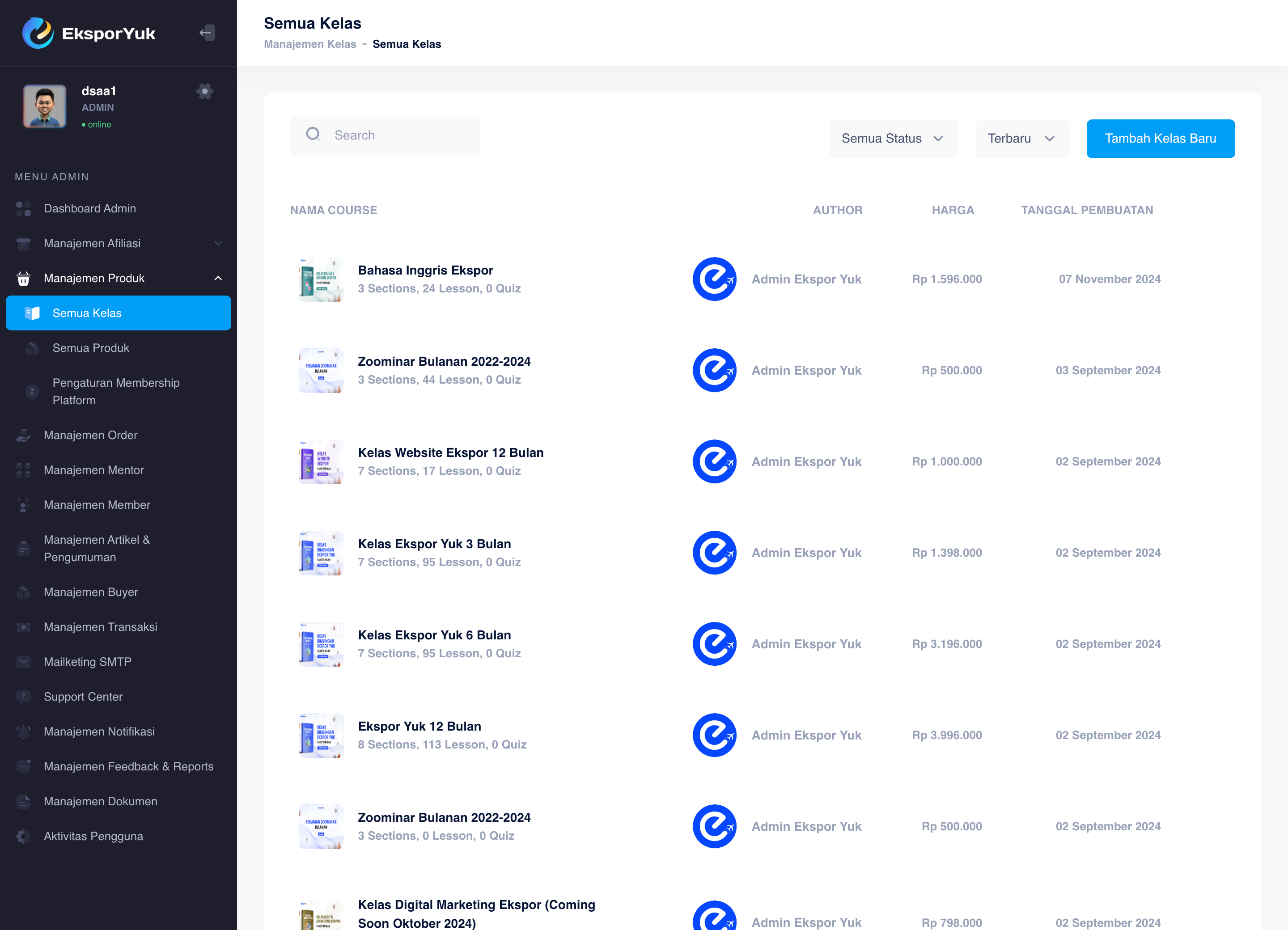Project Details
Ekspor Yuk Web App is a comprehensive web-based admin panel designed to manage and streamline learning export-import activities. The application leverages modern web technologies to provide a seamless user experience.
Features
- User-friendly Interface: The application features an intuitive and user-friendly interface that simplifies the management of export-import activities.
- Real-time Data Synchronization: Ensures that all data is up-to-date and synchronized in real-time across all devices.
- Secure Authentication and Authorization: Implements robust security measures to protect user data and ensure that only authorized users can access the system.
- Detailed Analytics and Reporting: Provides comprehensive analytics and reporting tools to help users make informed decisions based on real-time data.
Technologies Used
- NextJS: Utilized for server-side rendering and static site generation, providing a fast and efficient user experience.
- NestJS: Used for building efficient, reliable, and scalable server-side applications, ensuring the backend is robust and maintainable.
- MVVM (Model-View-ViewModel): Applied to separate the development of the graphical user interface from the business logic, enhancing code maintainability and testability.
- Storybook: Employed for developing UI components in isolation, allowing for easier testing and development of individual components.
- Redux Toolkit: Used for state management, providing a predictable state container for JavaScript applications.
- GraphQL: Implemented for querying and manipulating data, offering a flexible and efficient approach to data fetching.
Project Story
The Ekspor Yuk Web App project began with the goal of creating a comprehensive platform to manage and streamline export-import learning activities. The team identified the need for a user-friendly interface that could handle complex data and provide real-time synchronization across devices.
To achieve this, the team chose NextJS for its server-side rendering capabilities, ensuring a fast and efficient user experience. NestJS was selected for the backend to build a scalable and maintainable server-side application. The MVVM architecture was adopted to separate the user interface development from the business logic, enhancing code maintainability and testability.
Storybook was employed to develop UI components in isolation, allowing for easier testing and development. Redux Toolkit was used for state management, providing a predictable state container for the application. GraphQL was implemented for data querying and manipulation, offering a flexible and efficient approach to data fetching.
Throughout the development process, the team focused on implementing robust security measures to protect user data and ensure secure authentication and authorization. Detailed analytics and reporting tools were integrated to help users make informed decisions based on real-time data.
The result is a powerful and user-friendly web application that simplifies the management of export-import activities, providing users with the tools they need to succeed.
Screenshots

